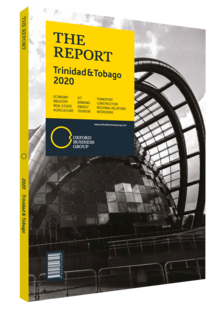Commodities investment important for diversified portfolios in Trinidad and Tobago
Despite being a commodity-based economy – indeed, 36.1% of Trinidad and Tobago’s GDP is from the energy sector – local capital market investors have traditionally shied away from commodities investing. The asset class worldwide has underperformed compared to traditional investment vehicles such as stocks and bonds. The Bloomberg Commodities Index had an average annualised return of -5.7% from 2014 to 2019, while the S&P 500 Index and Bloomberg-Barclays US Aggregate Bond Index had annualised returns of 11.4% and 3.1%, respectively, over the same period.
Sound Investment
Despite the relatively poor performance of commodities in recent years, many global asset managers still allocate a percentage of their portfolios to the asset class. One reason for this is commodities investment returns have a low correlation with traditional investments, and as such diversify portfolios. Commodities are also considered by investors to be a hedge against inflation. As the general price level for finished goods and services rises, the prices producers are willing to pay for inputs also increases. Financial assets – promises of future cash flows – tend to drop in value with inflationary surprises.
Commodities enable an investor to benefit from the supply and demand factors that drive a particular commodity’s price. Copper prices, for example, are driven by global aggregate demand and industrial activity because of the metal’s myriad applications. Demand for copper is often viewed as a reliable indicator of economic health. If an investor expects that the US-China trade dispute will ease going into 2020, and as a result expects Chinese manufacturing to accelerate, investing in copper may be a rewarding trade.
Managing Exposure
The purchase and storage of a physical commodity is impractical for a financial institution or a retail investor. Logistical considerations such as transport, storage, insurance and security costs make such an exercise infeasible. For these reasons, asset managers typically use derivatives or invest in the equities of commodity producers to gain their desired level of exposure to commodities.
For the sophisticated investor, futures contracts are available for an array of commodities on exchanges such as the Chicago Mercantile Exchange and the London Metals Exchange. These contracts track the spot prices of various commodities, but disparities between the futures price and the spot price do arise due to financing and storage costs. Furthermore, shortages in supply may make ownership of the physical asset more valuable to some consumers. These factors contribute to basis risk, or the risk that the derivative contract’s price deviates from its typically high correlation with spot market price. Futures exposure is also subject to negative roll yield, or the drag that occurs when rolling the expiring contract to a later expiration at a higher price. Despite these shortcomings, however, futures remain a popular route for asset managers to gain desired exposure to commodities.
A more accessible option available is the purchase equities of companies involved in the extraction and production of a commodity. For example, an investor can invest in the stock of a major miner such as Barrick Gold to gain exposure to the precious metal.
While the valuations of such companies are often closely tied to the prices of the commodities they produce, investors should be aware of the additional risks they undertake when entering such a trade. Commodity producers often incur significant fixed costs associated with the capital outlays common in extractive industries. This leads to considerable operating leverage. Debt financing in capital-intensive industries is typically high, resulting in an elevated level of financial leverage. As such, investing in the equity of a commodity producer is in reality a leveraged play on the price of the underlying commodity. While company-specific risk should be taken into consideration when investing in equities, such risks can be minimised by diversifying the portfolio to include multiple companies in the industry.
You have reached the limit of premium articles you can view for free.
Choose from the options below to purchase print or digital editions of our Reports. You can also purchase a website subscription giving you unlimited access to all of our Reports online for 12 months.
If you have already purchased this Report or have a website subscription, please login to continue.

